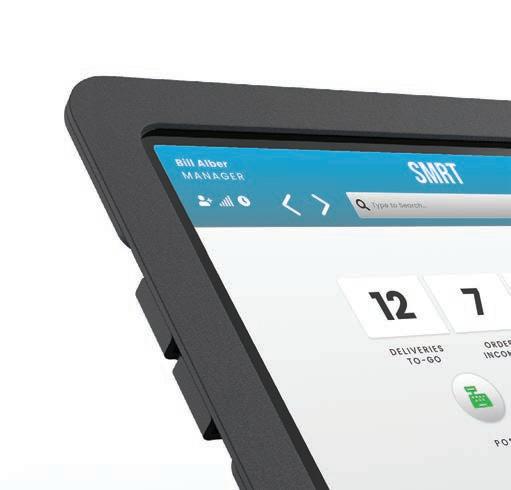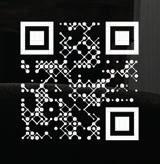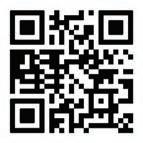

























































































If you need a little help finding this month’s hanger hidden on our cover, here’s a clue. Good luck!










































































































If you need a little help finding this month’s hanger hidden on our cover, here’s a clue. Good luck!















No matter how many plants or storefronts a dry cleaner has, and no matter how automated his or her operation is, a business thrives or fails by the performance of its staff. The team who cleans the clothes, interacts with the public and keeps the operation running is the most powerful asset a business owner has.
And, since labor remains a concern in the wake of the pandemic for most dry cleaners, hanging on to that staff and making them feel valued are crucial for future success.
This is the focus of this month’s issue of American Drycleaner. We’re looking at ways to keep your staff happy, and methods you can use to make your most valuable asset worth even more in the future.
The first feature of this issue, “Incentivizing Employees to Stay,” explores ways beyond the paycheck that owners can hang on to their staff. There are perks that can help cleaners hang onto their best-trained, most valuable workers, such as health insurance and matching 401k contributions. However, there are other, less expensive — often free — ways for leaders to express the value they see in their team. Simple gratitude, as opposed to taking staff for granted, can make all the difference.
Our second feature, “Building Up Employee Skill Sets,” explores the value of focusing on training, cross-training, bringing in outside experts for continuing education, and other methods that increase the value of employees to the company. Better still, these efforts can prove to team members that their leadership believes in them. Your best, hardest-working employees often want to grow their skill set and advance in your company. By providing the correct tools and demonstrating the mindset of continuous improvement, cleaners can improve their end product and service while also boosting morale and building a positive workplace atmosphere.
A business is only as effective as its employees. By taking time to show your staff how valuable they are to you, not only as workers but as people, you can increase loyalty, decrease turnover, and provide a win-win situation for everyone.
American Drycleaner (ISSN 0002-8258) is published monthly except Nov/Dec combined. Subscription prices, payment in advance: U.S., 1 year $50.00; 2 years $100.00. Single copies $10.00 for U.S.
Published by American Trade Magazines LLC, 650 West Lake Street, Suite 320, Chicago, IL 60661. Periodicals postage paid at Chicago, IL and at additional mailing offices.
POSTMASTER, Send changes of address and form 3579 to American Drycleaner, Subscription Dept., 125 Schelter Rd., #350, Lincolnshire, IL 60069-3666. Volume 90, number 3. Editorial, executive and advertising offices are at 650 West Lake Street, Suite 320, Chicago, IL 60661. Charles Thompson, President and Publisher. American Drycleaner is distributed selectively to: qualified dry cleaning plants and distributors in the United States. The publisher reserves the right to reject any advertising for any reason.
© Copyright AMERICAN TRADE MAGAZINES LLC, 2023. Printed in U.S.A. No part of this publication may be transmitted or reproduced in any form, electronic or mechanical, without written permission from the publisher or his representative. American Drycleaner does not endorse, recommend or guarantee any article, product, service or information found within. Opinions expressed are those of the writers and do not necessarily reflect the views of American Drycleaner or its staff. While precautions have been taken to ensure the accuracy of the magazine’s contents at time of publication, neither the editors, publishers nor its agents can accept responsibility for damages or injury which may arise therefrom.
Publisher
Charles Thompson
312-361-1680
cthompson@ATMags.com
Associate Publisher/ National Sales Director


Donald Feinstein
312-361-1682
dfeinstein@ATMags.com
Editorial Director
Bruce Beggs
312-361-1683
bbeggs@ATMags.com
Editor
Dave Davis
312-361-1685
ddavis@ATMags.com
Digital Media Director
Nathan Frerichs

312-361-1681
nfrerichs@ATMags.com
Production Manager
Mathew Pawlak
Advisory Board
Jan Barlow
Mike Bleier
John-Claude Hallak
Monika Manter
Wesley Nelson
Kyle Nesbit
Fred Schwarzmann
Vic Williams
Wayne Wudyka
Contributing Editors
Dan Miller
Diana Vollmer
Martin Young Office Information Main: 312-361-1700
Subscriptions
847-504-8175
ADC@Omeda.com
www.american drycleaner.com




Adry cleaner’s greatest asset isn’t the equipment in the plant or their number of storefronts. The biggest factor in determining the success or failure of the business is the team put into place to serve its clients. So, when a cleaner has built a winning team, it’s crucial to keep that team in place and building for the future.
When leaders start to take their team for granted, however, this could spell disaster. There are many ways to show appreciation for a job well done. While pay raises are always welcome, there are other methods cleaners can use to make team members feel wanted, and needed, for what they contribute to the company.

When it comes to making employees feel valued, simply acknowledging good work is a great place to start.
“As management, we play a huge role in incentivizing our staff,” says Dr. Alex Ellis, a transformational speaker and trainer who specializes in workplace culture. “If we feel a worker is going above and beyond the call of duty on their job, if they are a peak performer, I think that celebrating them and their contribution not only encourages them to keep up the good work, but I think it also encourages their co-workers to want to do the same.”
Being “seen” is important to workers, Ellis says.
“Sometimes, just simply acknowledging them by saying how much you appreciate them goes a long way,” he says. “‘I see you’ve been coming in early. I see you stay in later. You’ve increased your productivity by leaps and bounds from when you first started. I appreciate what you bring to the table. Thanks so much for being such an exceptional employee.’ Just acknowledging it goes a long way because, at the end of the day, we all want to be seen as individuals.”
“I think management teams have to be thinking outside the box,” says David Grippi, chief operating officer at Clean Brands, a garment-care franchise that represents, among other brands, Lapels Cleaners and Martinizing Cleaners. “It’s seeing what motivates employees outside of pay that can get them to do different things, whether that’s working for a bonus day off, or rewards like being named the team member of the week or the month.”
While it’s not a new concept, the idea of flexible work schedules blossomed during the COVID pandemic. While the structure of a drycleaning company limits the options when it comes to scheduling, cleaners shouldn’t overlook this potential perk.

“We’ve had some owners who have gotten flexible,” Grippi says. “We have an owner who has four mothers on staff, and they want to be home for their kids in the morning. They came to the owner and asked if it would be OK if they came in and did their production at 8 p.m., worked until 11 p.m., and then went home, slept, and could get their kids up and ready for school in the morning. The owner thought it was a great idea, and it’s worked fantastic for her.”
Solutions like this might not work for everyone on staff, Grippi says, but leaders can examine possibilities on a case-by-case basis.
“It’s hard to be flexible with the counter, which has to be open during store hours,” he says, “but if you have people in production wanting to work nights, it’s not a bad idea, because you’re going to walk in at 7 a.m.
and all the work is done for you.”
Ellis believes that cleaners can be flexible, even if they have smaller staffs.
“Take a look at your week, to see which days are peak days,” he says. “Your peak days might be Fridays and Saturdays, but low days are Tuesdays and Wednesdays. Knowing that, maybe you can start later or have different hours on those days when it’s really slow and give some of the team flexibility in their hours.”
In the day-to-day concerns of the workplace, it can be easy to put aside long-term issues like retirement, but addressing these matters shows that leaders want their employees to stay.
“As a manager, it shows you care about me holistically as an employee when you make sure that I have retirement, like a 401(k),” Ellis says. “You want to make sure that I have vacation days and personal time. Things like this show that, as an employer, you really care about the well-being of the people who work for you.”
Providing certain benefits, such as health insurance, for every worker might be out of reach for some dry cleaners, Ellis says, but for higher-level employees, it could be key to keeping valuable staff members.
“Depending on what they do, and how long they’ve done it, if you’re able to extend those benefits, those are the things that breed loyalty from your staff,” he says.
By doing some research, solutions in this area can sometimes be found.
“I know insurance and retirement accounts can be expensive, but there are payroll companies out there that offer these things for small businesses,” Grippi says. “There are companies that work with businesses that have under 100 employees to offer options that don’t cost a lot of money up front. This gives the employee something that they can work toward, even in small amounts.”
A dry cleaner can also use a tiered structure to encourage employees to stay in their jobs.
“Perhaps at five years, you get a 401(k) match, then at 10 years, you get a bigger match,” Grippi says. “I think it’s something that our industry needs to look into more, because that is something the younger generation is looking for.”
In addition to benefits, Ellis says that investing in team members’ professional development can also show that leadership cares for and believes in their employees.
“I think people want to feel that they’re growing and evolving in their profession,” he says. “No one wants to be in a dead-end job. Even if you’re really good at some-
thing, you don’t want to do the same thing for 50 years. Creating opportunities for growth and development helps employees not only stay loyal but to stay excited and motivated on their jobs for long periods of time.”
Ellis uses the example of an employee who is a great spotter.
“Move me up to the manager of the spotter department, where now I get to train other people to do what it is that I do,” he says. “I feel that I’m evolving, because now I’m in a leadership role. Then, let me develop a spot-cleaning manual. Now I’m moving to creating a curriculum, our policy and procedures when it comes to spotting. So, I might be doing the same thing, but I’m doing it on another level, and that’s exciting for me. Find those opportunities where people can feel that there’s growth and evolution.”
One of the quickest ways a leader can alienate their team is to expect a certain level of results and not provide the equipment that will make it possible. When cleaners refuse to cut corners in equipment maintenance and understand that they shouldn’t try to coax more life out of dying gear, workers feel better about their workplace.
“It sends a message that you care about your staff,” Ellis says. “In dry cleaning, there are some manual tasks that are repeated over time, and they can cause injuries like tennis elbow or carpal tunnel syndrome. If you invest in the equipment that makes some of that manual labor automated, you show your staff that you’re not just concerned about what they can produce — you’re also concerned about their safety and well-being.”
“If you want high quality and you want your team to achieve their pieces-per-operator-hour goals, they can’t do that on a piece of equipment that isn’t operating correctly,” Grippi agrees. “That piece of equipment could be 20 years old, or it could be brand-new, but proper maintenance of the equipment — giving it weekly, monthly and yearly maintenance to ensure that it’s running at peak performance — is very important to the employees.”
One of the things that separates a pleasant work environment from one that employees dread is the relationships they form there. If they are coming to work with friends, there’s a much better chance of them staying and enjoying their time on the job.
“Most people are at work more than they are during waking hours at home, so the work environment matters,” Ellis says. “If I’m going to be spending all this time here, I don’t want to begrudge having to be here. I want this to be an environment that I’m excited about

being a part of. It’s very important that there is a good culture on the job, and co-workers bonding with each other creates that type of an environment.”
Managers who recognize they can play a role in this team-building have an advantage over those who don’t, Grippi says, but it requires effort.
“That’s probably one of the bigger struggles, when you’re trying to build a team, or bring in new people to an existing team,” he says. “You’re trying to find that clique, where they work well together without a lot of drama behind the scenes.”
Giving your staff a target to aim for will help foster those relationships, Grippi believes.
“A key to building that team is to have common goals,” he says. “What are the expectations we are looking to have at the end of the week or the end of the month, and how do we get there as a team? If everyone works together to achieve those results, that helps the team bond.”
Ellis believes that leaders can also institute activities that promote team-building.
“That might be a monthly lunch, where we eat together, talk and build relationships,” he says. “Let’s go to Top Golf. Let’s go bowling. Let’s do a company barbecue.”
There are also ways to build camaraderie while helping the community.

“You can foster relationships by identifying a community service project,” Ellis says, “so that we, as a team, can do something that builds teamwork outside of the job. Maybe we’ll go to Habitat for Humanity and help paint a house, or we help at a soup kitchen.”
No matter the activity, Ellis says investing time in one another helps to form workplace bonds: “We’re even more productive together as a team when we go back to
work. People can be team-building without even realizing that the goal was team-building.”
There are team members who bring out the best in others, and there are employees who poison an atmosphere with a constant barrage of negativity. One of management’s key functions is to encourage positivity.
It’s best to “catch” people doing something right, Grippi believes.
“Recognizing someone doing a great job right away really sets the stage,” he says. “If you hear a great interaction between a team member and a client, call it out right away after the client leaves and let them know they did a great job. Use it as a coachable moment. Bring the team up and talk about this interaction — what transpired and how this was handled. Tell them that Joe did a great job with the way he handled this customer.”
“No matter what it is in life, what gets rewarded gets repeated,” Ellis agrees. “When we realize what negativity does to the climate of our companies, it should incentivize us to celebrate when a person does have a positive attitude, because attitude is contagious and has an impact on co-workers. It also has an effect on the customers who come through the door. When you have a person who has a bubbly, warm, engaging personality, it has an impact.”
While attributes like productivity should certainly be rewarded, Ellis believes attitude recognition is also important for the health of the workplace.
“Let’s look at who has a good attitude,” he says. “Who’s pleasant to be around? Who makes this a happy place to come to every day? Let’s look at John. I love working with John. When he’s on my shift, I know we’re going to have a great day. The day is going to fly by because we always have a good time working together.”
Both Ellis and Grippi believe that, if leadership can provide the support necessary to make the team members feel like more than interchangeable cogs, those efforts go a long way in making their business a place where people will stay.
“Workers sometimes spend more time at work than they do at home,” Grippi says. “So, it is really their second home. And if it feels like home and not just a job, when they want to go to work, that changes the mindset for not only that employee, but it trickles down to team morale, team-building, hitting the goals, and more.”
“It goes a long way with staff,” Ellis adds, “that you’re concerned about them and they’re not just a hired hand here to produce for you, but that they are a human you respect and value.”

SMRT is dry cleaning software that puts every aspect of your business operations in one easy-to-use interface and automates tasks you’ve always dreamed of simplifying. Time is money - and now you’ll have more of both. How can you be sure SMRT gets your business? Because we are dry cleaners too. Let us show you the way.




“I’M BLOWN AWAY BY SMRT MARKETING. MY JANUARY ROUTES ARE UP 41%, AND MY RETAIL STORES ARE UP 49%. WOW!”
ELTON CERDA, NYC DRY CLEANERS
Your business is your life. Live SMRT.
SMRT Marketing slashes the time and effort required to grow your business. Our automated tools match your customers with the right messaging at the right time, build your digital reputation, and deliver explosive results. Your SMRT System is designed to handle it all. The question is, are you ready?



MARKETING IS A GRAND SLAM FOR OUR BUSINESS. ”
“I am very pleased with how the software is performing and the functionality. It has made communication with our customers more robust and streamlined. Issues I have posed to the company have been listened to and actual changes have taken place based on recommendations. have Implemented around 15 different software products on a large scale in my career and would have to say this was one of the best experiences so far.”
“I used a legacy system (the largest in the industry) for 13 years before switching to this “upstart” back in 2017. The difference was immediate, obvious, and impactful for our operation. And that was back when they were an upstart, and the software was still in its relative infancy. They are now one of the dominant players in the market, and for good reason. The absolute best thing about this software, IMO, is the way customer communications are handled. It’s partly an email client, part text interface, and part slack, all tied into one, flawlessly.”
“...from the change over to the delivery for my business the SMRT Systems is [by far] the best at teaching employees how to work the system. My customers swear that the texting to let customers no the there Dryclean orders are done is [easily] the best in our industry! So glad we went with SMRT!”
BILL
“The developers are always working to make the system work better. It already works great but if there is something that you would like for it to do you can request it and it will probably get done. I also like that it is so easy to use. New associates can be up to speed in just a few days.”
“We have improved garment tracking and communication internally and with customers. We are able to be really transparent. The customer interface is great. The team is great to work with! Our systems and processes are getting streamlined in a way we’ve been dreaming about for years, but had roadblocks with previous software.”

“The migration to SMRT was validated and praised by both our multi-generation of employees and customers. The ease of learning, navigating, and customer interaction has elevated our service and won the confidence and respect from all. Reporting and data analysis continues to become even more sophisticated. Unlike many services where support diminishes after the honeymoon stage, the SMRT support team continues to be very responsive with great attitudes long after conversion.”
“Our internal company communications, automation with management reporting, billing and customer resolutions have been the biggest benefits with the software implementation. What took several emails, manual phone calls and meetings with our management are now easily reported across all communicaitons channels and have reduced the time to resolve day to day processes.”
“...SMRT allows you to follow real time the daily ins and outs of your business. am able to physically leave my facility and check in remotely. This was a huge step in me being able to devote time with my family, and giving me back control over my business.”
“My overall experience with SMRT has been fantastic! They are a great partner to have in the industry.”
“My overall experience with SMRT has been great. The customer support and complete openness to look for and create new functions has made our everyday use easier. The ability to track garments, contact customers, track drivers, and option to make just about any kind of data report we request has been a life saver.”

“The extra communciation features for my team and our customers. The ease of use. The delivery and route optimization features to help build and organize our growing Pickup and Delivery system. Has incoporated into our marketing efforts beautifully.”





















While some workers are happy with the status quo, satisfied with their current position and skill set, many highachieving employees want to be challenged and learn new skills. For these team members, the opportunity for growth is attractive and will keep them loyal to their employer — a trait dry cleaners should encourage during a difficult labor market. So, how can a leader challenge their team to achieve more and become an increasingly flexible workforce?
Sasha Ablitt, owner of Ablitt’s Fine Cleaners & Taylors in Santa Barbara, California, believes it’s crucial for a business to continue building up each employee’s skill set.
“The quality of our product is dependent upon the quality of our workforce, and that goes for customer service as well, which I also consider a product,” she says. “You have to have people who are well-trained in dealing with the public, which seems to be getting harder and harder.”
Brian Johnson, director of training for the Drycleaning & Laundry Institute (DLI), agrees that a business benefits by increasing its team’s skills.
“An increase in knowledge can easily lead to an increase in productivity, efficiency, and quality of service,” he says, “and that can ultimately create
better profits and better leaders within the company. By training your employees in entirely new areas, you can leverage your existing workforce to survive the current job market crisis.”
For Ablitt, training employees for more than one role is “baked” into her business model.
“We have always cross-trained our employees,” she says. “And we always try to incorporate things that bring our customer service employees into the back of the plant and bring the production folks up to the front so they can understand each others’ worlds. It’s always paid off in higher productivity, as well as low turnover.”
Before secondary skills can be taught, however, the onboarding process sets the tone for what an employee can expect from the company and its leadership.
“You have to set the expectations,” Ablitt says. “Communication is probably the most important thing. There should be a lot of one-on-one communication when you first hire someone. If they don’t know something, we want them to ask questions and not just guess.”
A big part of this communication should be letting the new hire know what is expected of them, as well.
“When onboarding, management also should have to be clear about their expectations,” Johnson says, “whether it’s discussing which tasks they will be performing, or how many pieces per hour are expected. This should all be done up front. Communication is crucial.”
Be sure to factor in patience during onboarding.
“The first couple days in the cleaners are overwhelming for most people,” Ablitt says. “It’s a lot of information — it’s your point-of-sale system, meeting your customers, and memorizing things about the business. Then, customers are always asking different questions, and then you have the cleaning process — it’s just a lot. So, you have to be patient with them and not overwhelm them too much. Have them focus on one small area at a time until they get it.”

Communication doesn’t need to constantly come from top leadership, Ablitt says. A more-experienced peer can often provide the best guidance in certain situations.
“We set up a buddy system,” she says. “You want them to have someone who they feel comfortable with besides just their manager. In the beginning, the manager will probably be checking in with them every hour. But we’ll put them with a buddy, who is like their mentor — it’s usually the lead at the department that they’ve been starting in.”
“Having a mentor will help new hires feel more comfortable and connect with current team members,” Johnson agrees. “Having a go-to person whom they can ask questions helps to ease some of that anxiety of starting at a new company. That’s my preferred method.”
This allows new hires to feel more in control of the process, which is key in avoiding the feeling of becoming overwhelmed.
“Getting overwhelmed can really shut somebody down, especially in the beginning,” Ablitt says. “At that
point, they won’t be asking questions, because every second is a question, and they get discouraged.”
Once that employee is comfortable with their initial role, the question of cross-training then comes into play.
“Cross-training is hugely important, and the pandemic proved it,” Ablitt says. “When we cut back, it was like everyone was doing everything. And I feel that it builds selfconfidence in the staff. They understand each other better, and they understand the bigger picture of the business.”
It’s important to not put too much pressure on new employees to cross-train, Ablitt says, but to give them time.
“We probably wouldn’t even look at cross-training until a new hire has been here for about six months,” she says. “Before we start switching them around, we really want them to be comfortable with the company, the processes, and the culture in general. Then, we start seeing what they’re interested in, and if they would enjoy doing something else.”
To be effective, managers know their staff and their potential before starting cross-training efforts.
“A big piece of effectively cross-training staff starts with recognizing that not everyone is always capable of
cross-training,” Ablitt says. “With some people, it just doesn’t seem to work as well. So, it starts with recognizing when people have the ability to (be cross-trained).”
Johnson agrees with the importance of assessing employees based on their skills and personality.

“Not everyone is cut out to perform multiple skills at a high level,” he says. “Management should be selective about who they cross-train. Whoever are your best producers now are probably prime candidates to teach new skills — they will probably be more willing, and will be able to do them well.”
The employees who are able to effectively cross-train should be given a clear picture of why it can benefit them and the company.
“I recently heard a speaker at a conference talk about what employees want to see, and he said something that stuck with me,” Johnson says. “They want to see a future that is better than their past. So, what happens next after the upscaling process? Is it a pay increase? Is there an opportunity to move into management? Does having two skills mean I have to do twice the work? Leaders need to communicate about how continuing development benefits the employee. That’s what they want to see.”
Once completed, cross-training is rewarding for all
involved, Ablitt believes.
“We usually find that there are some people who end up knowing how to do several things,” she says. “They can use every single press station, and then they can work in sheets and households, and sometimes they then will go into mark-in. It’s wonderful to see — you can really identify those strong performers.”
In addition to training done by in-house employees, bringing people in from the outside to teach new skills or provide new ideas can be beneficial.
“We most often bring people in to train us,” Ablitt says. “We bring them in for one- or two-week stints throughout the year. As far as off-site training, that’s more for managers. We find that it’s a bit of a perk, because they get to go out for dinner at night, do different things, plus meet all sorts of people in the industry.”
When it comes to training, Ablitt wants to ensure it will provide a benefit, both to the employee and to the company.
“In general, you want to make sure that (the employee) has proven they have not only the ability but the desire and drive to improve,” she says. “And then, how much are they actually going to get out of that event? They have to be able to bring it back. I would expect them to be able to present it to the staff, or to myself and then to the staff.”
As far as training on-site, Ablitt urges cleaners to allow ample time for it and make the most of the opportunity.

“I’ve heard some nightmare scenarios where the folks come in for the training, and then there’s no one to train because everybody’s too busy and can’t be taken off their job to actually attend the training,” she says. “Make the time, have a schedule before that person gets there, and make sure everybody knows this person is coming. After the person leaves, have follow-ups and see what’s changed. If you prioritize it, so will the employees. Otherwise, nothing will change. You will have spent all sorts of money on training, and nothing happens.”
Part of having people outside the company provide training is that it is a skill that not everyone has.
“On-site training can be challenging when the wrong person is doing the training,” Johnson says. “Just because someone is knowledgeable at certain tasks doesn’t necessarily make them a good trainer or instructor to others. So, if the current facility lacks a good trainer, or no one on-site has the knowledge or skills you want to develop, then it may be time to go to a place that has that expertise.”
Johnson believes that it’s in management’s best interest to take full advantage of off-site training opportunities.
“In every class, my students say the same thing — by going off-site, employees can physically and mentally separate themselves from the work environment,” he says. “This means fewer interruptions and more focus on learning skills. Off-site training can also strengthen the workplace culture. Employees view this as something special, and they feel more valued when they
understand that their management thought enough of them to make that investment.”




In a perfect world, there would always be time and opportunity for training. But in the world we live in, cleaners have to make training a priority if they want to increase their team’s collective skill set.
“Managers are often busy, and if you have a big day or something comes up, we think we just don’t have the time,” Ablitt says. “I’ve come to believe that’s really just a mindset. It amazes me that, on the busiest day, we can still have a team meeting, and everything works out just fine in the end. And yet, if you left it to the employees, they’d say they didn’t have the time. So, every day is busy, but finding that time to cross-train has to be a priority — you just have to do it.”
Making training an ongoing effort is also key to gaining its benefits, she believes.
“Once you stop doing it, or if you let it slide, then they’ll know that you don’t mean it,” she says of a cleaner’s workforce. “You won’t have your employee buy in to the training if they watch you let it slide.”
Another barrier to training success, Johnson says, is the temptation to rush the process.
“It takes time to learn new skill sets, and that amount of time varies from person to person,” he says. “Expecting miracles only frustrates everyone involved. They should have goals, but they should be achievable.”
When it comes to training, people have different ways of learning and processing information, and managers who try to use a “one-size-fits-all” approach might be setting themselves and their team up for frustration.
“No two employees are the same,” Johnson says. “They will have varying levels of education experience. Employees will become more engaged when they feel you understand their specific needs. So, tailoring the program to them is very important.”
Getting an employee’s input can help with the creation of a successful, personalized plan.
“Employees may already have some interest in moving to another department or learning an additional skill,” says Johnson. “Again, communication is going to be key for success— employees need to have a clear understanding of what their roles and responsibilities will be, both during and after the training process.”
• SolutionsforlaundriesandDryCleaners: and innovative laundry machines for commercial use


Quick, efficient, durable,
• The“Green”alternativetodrycleaning:WetCare - The original wet cleaning system developed by Miele

• Economical & Sustainable: Less water, less energy, easy to operate
• SaveMoneyandTime: Fast wash & drying cycle times increase productivity
• PatentedHoneycomb® Drum(onWasher & Dryer): Cleans textiles with extra care, and extends fabric life expectancy
• ExcellentSpinPerformance: Very low residual moisture on account of high g-force




• Technology & Innovation: Always the right machine for efficient laundry care
• FreelyProgrammable: Up to 200 fully easy-to-use custom programs
To learn more about Miele’s full line of WetCare laundry solutions visit mieleusa.com/professional.
Attendees explored ways to improve convenience and the customer experience
LOUISVILLE, Ky. — America’s Best Cleaners (ABC), a national certification agency and consulting firm for the drycleaning and textile care industry, recently hosted a Live Accelerator Meeting on in Louisville, Kentucky, with the theme of the meeting being “Convenience.” During the meeting, held on March 29-32, 2023, affiliates explored strategies and tools to drive business growth and enhance the client experience.
The three-day event was hosted by ABC affiliate NuYale Cleaners and provided attendees with the opportu-

nity to reconnect and share challenges and successes.

“There is nothing better than when our affiliates get together in person and are able to experience a business application, concept and specific technology that enhance the level of service we can provide to our clients,” says ABC Executive Director Chris White. “We appreciate the team at Nu-Yale Cleaners for providing us access to see how their 24/7 kiosks have had a positive impact on their business. There were productive discussions amongst affiliates and partners on how we can make our businesses more convenient for our clients, team members, and leaders.”
In addition to its monthly virtual Accelerator call, ABC hosts a Live Accelerator Meeting twice a year — once in the spring and once in the fall.
The event kicked off on Wednesday with an opening reception at Overdrive, where affiliates had the chance to participate in ax throwing, a virtual reality rage room, and a racing simulation. Organizers say that the laid-back setting
encouraged affiliates to connect and get to know each other.



“The visit to Nu-Yale was very informative,” says Jan Barlow, owner of Jan’s Professional Dry Cleaners and a new ABC affiliate. “They were one of the first adapters of kiosks, and learning about their historical experience with this type of technology was invaluable. From sharing best practices to exploring new AI technologies, the meetings were very helpful. The diversity of affiliates and attendees, as well as our facilitator Chris White, made for a very meaningful experience. I came home with a list of actionable takeaways for my business. This was my first meeting, and the time was very well spent!”
On Thursday, affiliates learned about the benefits of 24/7 kiosk technology, delivery services and participated in a tour and critique of the Nu-Yale production facility. The afternoon included a panel discussion on “Conveniences of the Future.” The panel speakers were Tom Beidle of Spot by Xplor, Nathaniel Dubasik of Metalprogetti, Mark Albrecht of The Route Pros, Dave Troemel of BeCreative360, and Jeff Quail of Sankosha.
“By bringing together the best minds in the industry, including the leaders at Spot, Sankosha, Metalprogetti, Kreussler, The Route Pros, and BeCreative360, we enhanced the level of engagement and thought leadership we strive to provide at our events. We thank these sponsoring partners for taking part in a very forward-thinking panel discussion on how we can improve our businesses and better serve our clients. There was an optimistic energy in the room as we discussed our successes and what the future holds,” White says.
The day ended with an affiliate dinner and bourbon tasting at the 21c Museum Hotel Louisville. Day 2 of the Accelerator consisted of affiliate-only workshops and a masterminding session, followed by an AI Hackathon in which affiliate teams were provided with several complex business challenges that required them to use AI tools to craft solutions, strategies, and actionable applications to enhance productivity.
“The Louisville Accelerator meeting was very exciting and provided a ton of information,” says Gary Maloney, the owner of Nu-Yale Cleaners. “It was an overall great experience.”


2023 RATES: One- to five-time rate: $2.35 per word, boldface $2.40 per word. Minimum charge: $50.00 per ad. Call or write for our threeand 11-time rates. If box number is


used, add cost of 5 words. Display classified rates are available on request. All major credit cards are accepted.






DEADLINE: Ads must be received by
the 1st of the preceding month. For example, for a August ad, the closing date is July 1st.
PAYMENT FOR CLASSIFIED ADS: Must accompany order.

2022 RATES: One- to five-time rate: $2.20 per word, boldface $2.30 per word. Minimum charge: $25.00 per ad. Call or write for our threeand 11-time rates. If box number is used, add cost of 5 words. Display classified rates are available on request. All major credit cards are accepted.



DEADLINE: Ads must be received by the 1st of the preceding month. For example, for a June ad, the closing date is May 1st.
PAYMENT FOR CLASSIFIED ADS: Must accompany order.






10 YEARS AGO. Getting a Raise — Wages were going up, according to respondents of the American Drycleaner Wire survey. When asked if they had reviewed employee compensation in the last six months, 64.7% of those responding said they “raised pay on an individual basis,” while 23.5% “raised pay across the board. Only 11% replied no, saying that they “did not raise pay.” When asked if they had been forced to lay off any employees for financial reasons in the past 12 months, just 17.6% reported that they had.

25 YEARS AGO. The Rise of Alternative Solvents? — If the industry in general cannot achieve regulatory compliance regarding the use of perc, then the widespread adoption of alternative solvents would become more plausible, said IFI CEO William E. Fisher during a speech delivered to the International Drycleaners Congress meeting in Munich, Germany in May 1998. “Over the next year in the United States,” he said, “I project that unless there is major new evidence supporting the noncarcinogencity of perc, we’ll continue to see a slow decline in the number of perc drycleaning plants.”



50 YEARS AGO. Dress for Success
A 1973 career apparel market research study conducted by the industrial studies division of Frost &
Sullivan, Inc. estimated that the annual volume for this industry would reach almost $300 million in 1981. The firm estimated that the career apparel market in 1973 was $65 million. The study defined “career apparel” as “clothing with fashionable individuality used in white-collar job situations.” The firm went onto say such clothing was “functional,” and had other features that distinguished it from the uniform, which they defined as “protective clothing.”
75 YEARS AGO. School Days — As of June 1948, a lot of progress had
been made in an effort to get dry cleaning on the course listings at Oklahoma A&M College, reported John D. Cash, executive secretary of the Oklahoma Dry Cleaners Board. A building to house the drycleaning course on the A&M campus had been obtained, machinery had been purchased and was ready to be installed and the search was on for qualified instructors for the school. The drycleaning school was expected to become a permanent part of the college.
— Compiled by Dave Davis, Editor









When you welcome American Express® Cards, you have access to benefits, services and programs to help your business thrive, including curated o ers and discounts to help you get more out of your business, and solutions and tips to help attract new customers. Scan the QR code for more information on available resources.














